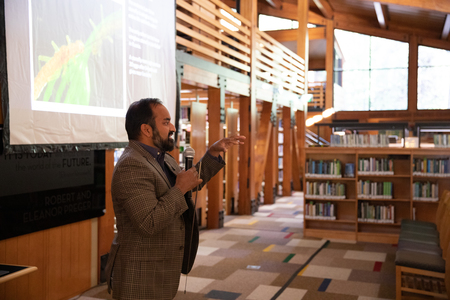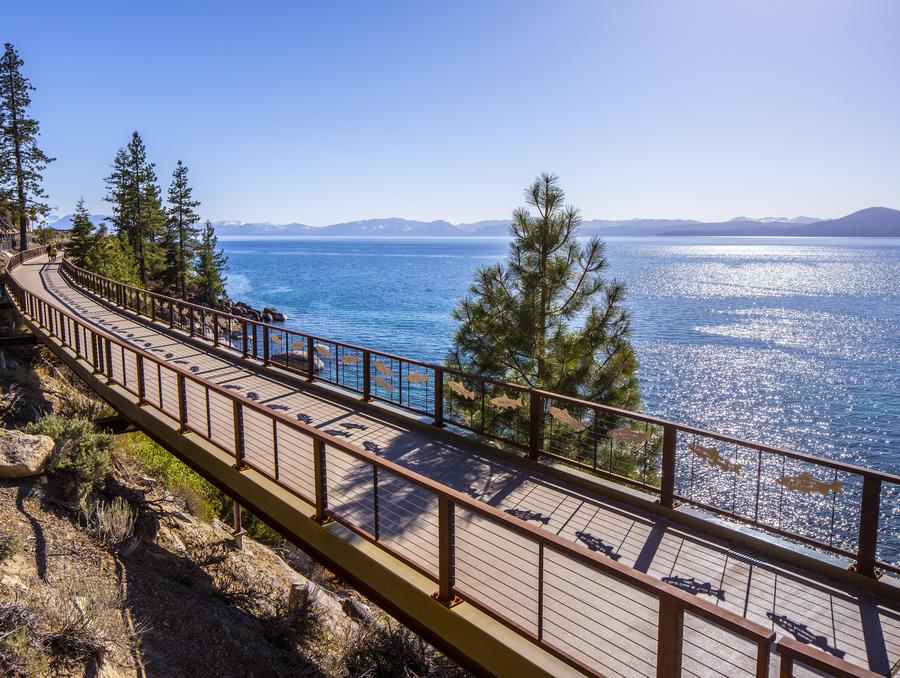
Lake Tahoe has always been known for its incredibly clear blue water and now it seems it is only improving. In the spring of 2023, numerous news stories were released stating that the clarity of the lake is the best it has been since 1980 and the public is wondering how this happened and how can we keep this level of clarity.
Sudeep Chandra is the director of the Ozmen Institute for Global Studies and the Global Water Center; he is a professor at the University of Nevada, Reno. He has many projects including recovering native species, managing non-native species, understanding the effects of land use change on water quality as well as several others across the globe.
Many news articles have recently come out about Lake Tahoe’s improved water clarity. Do you know why and how the clarity of Lake Tahoe improved so dramatically?
One thing to point out is the clarity has not improved dramatically as stated in the various press coverage. We did have one data point in January that shows one of the best clarity measurements on record, which could be attributed to upwelling of waters in Tahoe that have fewer particles. However, when you look closely at the long-term record, you can see the clarity has improved in the summer many times in the historical record.
If you look at the data carefully, and not what the press releases talk about, you can see that the drought of 2022 likely played an important role in controlling the amount of nonliving particles that were delivered from the watershed. Simply, we know from other studies evaluating the last 20 years or so of data from Lake Tahoe that drought conditions play an important role in controlling the amount of particles delivered to the lake. Once all the data is available the scientists from the Tahoe Science Advisory Council can evaluate what really happened with clarity in 2022.

One of the reasons listed in the news articles for the lake’s improved clarity are the zooplankton living in the lake. With the decrease in the zooplankton population over the years, how did the lake still stay so clear?
Our previous studies from the University of Nevada, Reno and elsewhere show that mysid shrimp likely do not play a direct role in controlling the particles that influence clarity.
In the article, “Zooplankton influences on phytoplankton, water clarity, and nutrients in Lake Tahoe”, one of Chandra’s students, Zach Bess and coauthors, went in-depth about how zooplankton can affect the water quality in Lake Tahoe.
The interesting part is how the mysids might affect other zooplankton living in the lake that might influence the particles. However, from Bess’ work and other work from UC Davis in the early 1990s, we know that the other smaller animals called zooplankton also do not play a major role in controlling clarity.
Bottom line: As a science community, we have a general agreement that animal zooplankton do not influence clarity but their indirect roles in other processes are not known. We need to stay the course to protect the watershed so that less nutrients and particles run into the lake.
Besides the lake's clarity, is there anything else the public should expect with the sudden increase in the zooplankton or the lake as a whole ecosystem?
It is important to look at the composition of the zooplankton at the species level. Equally important, we should examine how changes in the water quality might influence the composition or types of zooplankton species in the lake. We need to think “beyond the clarity” and examine at the overall health of the ecosystem, including the types and quality of particles of food, amount of algae available for zooplankton to eat, and how they could feedback to overall ecological health of Lake Tahoe.
It is also important to measure the connections between the offshore where the clarity is measured and the changes to the nearshore where the lake may be greening in some locations, or changes in the deep bottom of the lake. The nearshore and deep bottoms of lakes are the lungs of a lake ecosystem and we already know there is a major decline in the plants and invertebrates that live at the bottom of Lake Tahoe. Perhaps we should be asking how changes in the nearshore and bottom of the lake feedback to the overall health of the Lake Tahoe ecosystem including clarity?
Is there anything the public can do to help keep this level of clarity?
It would be helpful if the public would take a greater interest in supporting the scientific efforts that are underway to understand the controls on Lake Tahoe’s clarity. If they would let our policy makers know they value the use of science so additional resources can be provided to the Tahoe Science Advisory Council for evaluating changes in the lake. Currently, there is limited funding available for scientific investigations at Lake Tahoe compared to the grand challenges the lake is currently facing.




